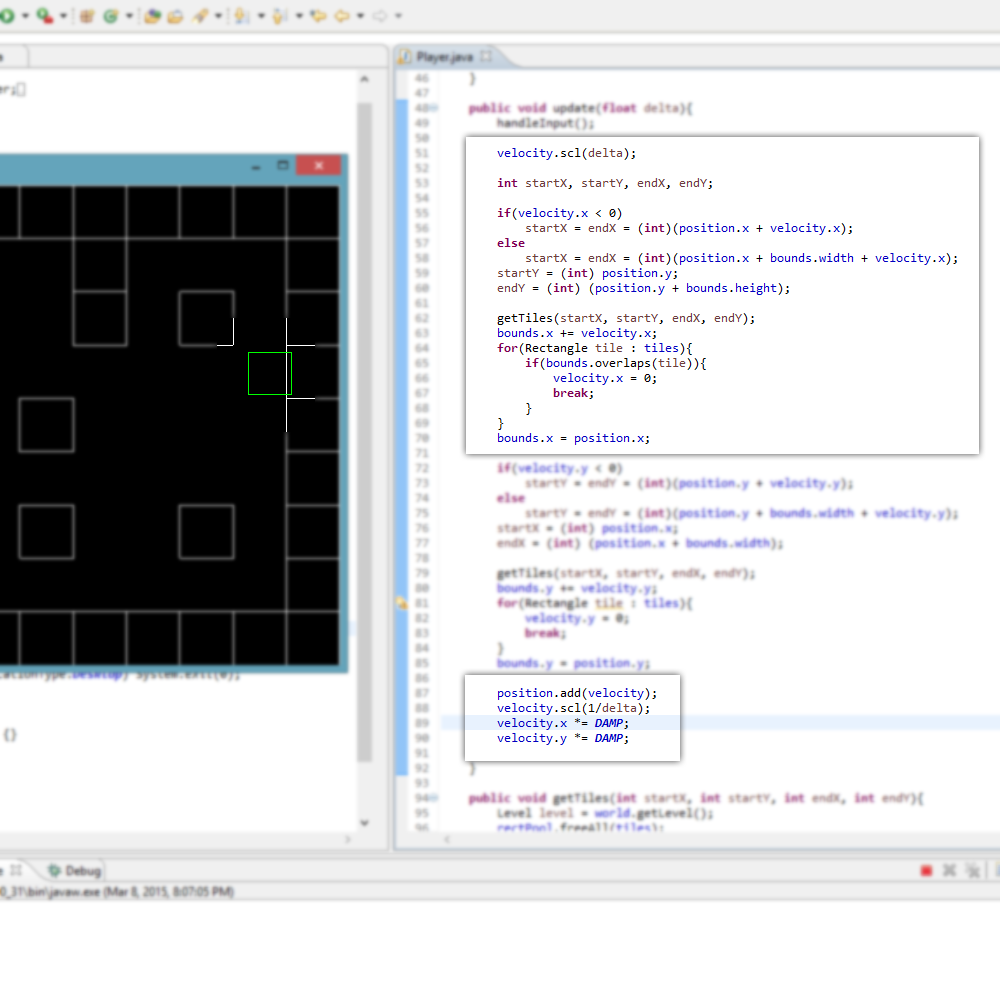Ahoy!
So for a practice project, I decided to slowly build a tile system and really tear apart the collision so that I could understand it all. When doing so, I came across something I just can’t seem to figure out. Here is a photo:
Essentially, the block will get stuck in the wall before stopping, but not every time. The image shows an example along with the X collision handling and position/velocity handling, but it also occurs for the Y direction. What is a better method of collision that will allow me to avoid this?
Here is my getTiles method:
public void getTiles(int startX, int startY, int endX, int endY){
Level level = world.getLevel(); //Level has the tile array
rectPool.freeAll(tiles); //don't know if I need to since its in the player class..
tiles.clear(); //Clears rectangle array called tiles
for(int x = startX; x <= endX; x++){
for(int y = startY; y <= endY; y++){
Tile tile = level.get(x, y); ///grab tile in that spot
if(tile != null){ //if not null
Rectangle rect = rectPool.obtain(); //grab rectangle out of pool
rect.set(tile.getBounds()); //set it to the bounds of the tile
tiles.add(rect); //add to rectangle array
}
}
}
}
Thank you!
- A
Edit* - The max speed of the player is 5f… in case that is relevant.


